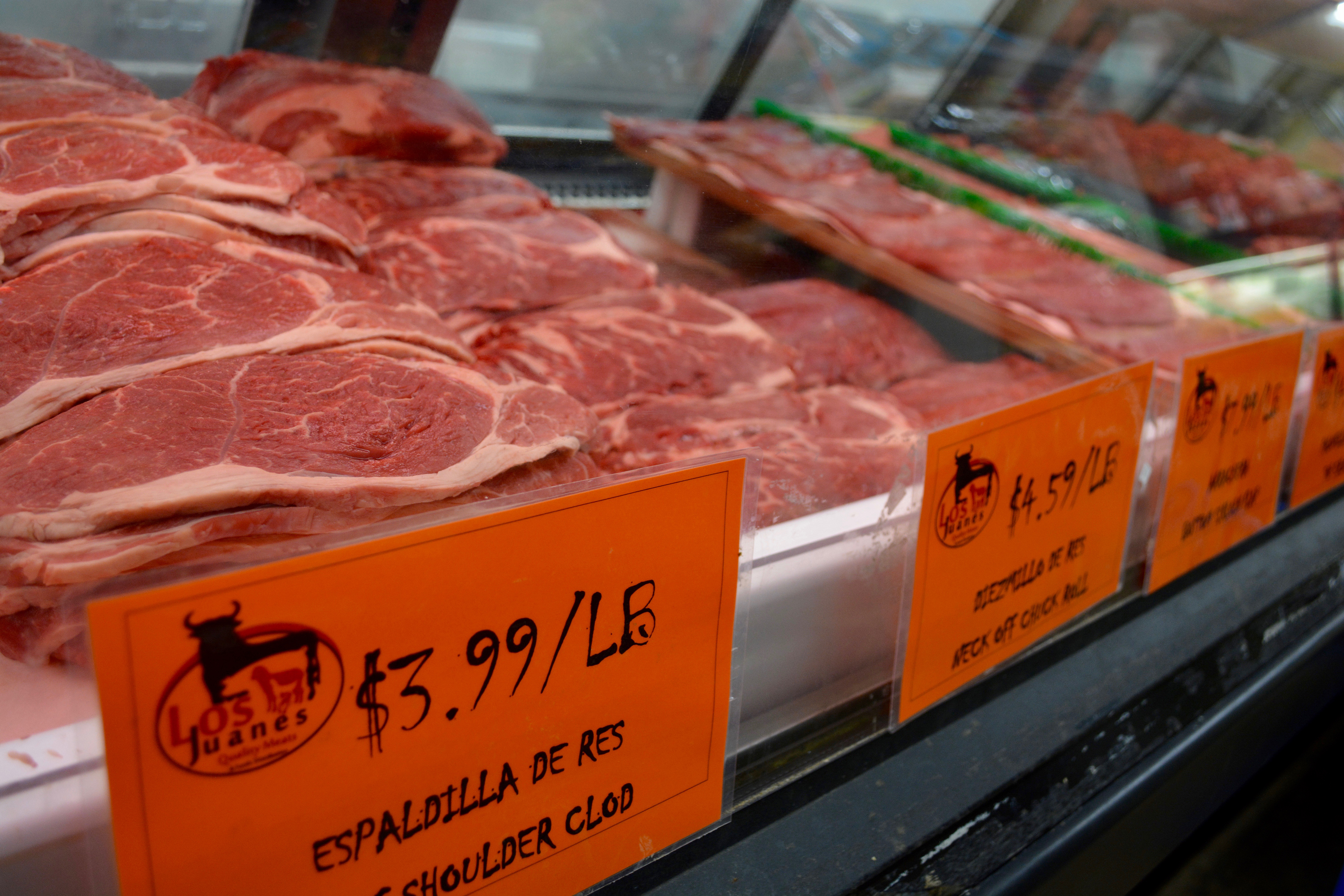Reveal the Art of the Butcher's Cut in a Modern Meat Market
In the ever-evolving landscape of contemporary meat markets, the butcher's cut has actually transcended its standard origins, combining olden craftsmanship with contemporary methods. Today's butchers are not just cpus of meat; they are knowledgeable artisans who emphasize sustainability and moral sourcing. Their knowledge in choose and preparing cuts customized to certain culinary requirements uses an unequaled eating experience. What genuinely sets the contemporary butcher apart is their capacity to create a much deeper link in between customers and the beginnings of their meat. Just how do these masters balance custom with technology, and what effects does this have for the future of meat usage?
Advancement of Butchery Methods
The advancement of butchery methods shows an abundant tapestry of innovation and adaptation driven by improvements in technology, adjustments in customer demand, and a deeper understanding of meat scientific research. Historically, butchery was a craft gave via generations, with techniques developed over centuries to optimize return and taste. However, the industrial revolution ushered in automation, transforming conventional techniques and allowing large processing.
The mid-20th century saw butchery techniques even more refined by scientific insights right into muscular tissue biology and meat aging, improving both tenderness and preference. Advancements like vacuum product packaging and refrigeration prolonged product shelf-life, enabling butchers to diversify offerings and improve top quality control. This period likewise marked the increase of specific devices, such as band saws and meat slicers, which enhanced accuracy and performance in meat handling.

Computerized systems now aid in tracking pet provenance and enhancing cuts to meet specific client preferences. Additionally, a resurgence in artisanal butchery has emerged, mixing traditional abilities with modern-day understanding to provide to consumers seeking moral and sustainable meat alternatives.
Comprehending Meat Cuts
Understanding the complexities of meat cuts is necessary for both butchers and customers seeking top quality and value. For butchers, accurate cuts mirror ability and regard for the craft, ensuring marginal waste and optimal yield.

Comprehending muscular tissue composition is vital; muscular tissues used extra often by the animal often tend to be tougher and are best fit for slow food preparation approaches, while less-used muscle mass, like those found in the loin, are extra tender and ideal for grilling or roasting. Familiarity with these distinctions equips consumers to make enlightened selections, boosting their culinary ventures.
Picking High Quality Meat
Picking the appropriate meat involves more than just picking a visually appealing piece from the display screen. The art of picking top quality meat requires a critical eye and knowledge of details features that check these guys out represent freshness and quality.
Secondly, consider the marbling, which refers to the white flecks of fat within the muscle mass. Appropriate marbling is a vital indication of tenderness and taste, as it thaws throughout cooking, boosting the meat's juiciness. Remember, higher marbling commonly correlates with exceptional top quality cuts, such as USDA Prime.
Structure is another crucial element; meat ought to feel strong to the touch, not slimed or overly soft. Additionally, bear in mind the aroma. Fresh meat should have a clean, neutral odor, complimentary from any type of sour or repulsive odors.
Combining Cuts With Food Preparation Approaches

Conversely, harder cuts like brisket and chuck roast are rich in collagen, which breaks down right into gelatin when prepared slowly. These cuts are optimal for braising or sluggish roasting, enabling the meat to soften over time and develop deep, intricate tastes. Cuts such as short ribs and pork shoulder make out well with slow-cooking methods, where extended cooking times change their durable appearances right into delicious dishes.
Lamb shanks and oxtail, which require long term food preparation to soften, are excellent candidates for cooking or slow simmering. These approaches coax out abundant, hearty tastes while maintaining wetness. By comprehending the unique attributes of each cut, chefs and home chefs alike can elevate their cooking developments, ensuring each dish is both satisfying and memorable.
The Butcher's Duty Today
Navigating the advancing landscape of the modern-day meat market, the butcher's function today prolongs past mere preparation of cuts. Contemporary butchers are cooking craftsmens, instructors, and advocates for sustainable methods. They link the space between the farm and the fork by ensuring moral sourcing, recognizing pet husbandry, and prioritizing openness in the supply chain. This shift reflects the growing consumer demand for quality over quantity, where provenance and animal well-being are critical.
In enhancement to crafting accurate cuts, butchers currently engage straight with consumers, using cooking advice and tailoring options to suit individual needs and choices. Their know-how in meat aging, marbling, and taste accounts empowers consumers to make educated choices, enhancing their culinary experiences. This individualized solution exhibits the butcher's evolving duty as a relied on consultant in the kitchen area.
Moreover, butchers are crucial in decreasing waste, making use of entire animals to produce diverse products such as sausages and supplies. This extensive method not just appreciates the pet however also lines up with contemporary sustainability objectives. In this means, the modern butcher personifies both tradition and development, adjusting to an ever-changing market while preserving the creativity and integrity of their craft.
Conclusion
The contemporary butcher's craft intricately weaves typical techniques with modern technologies, stressing lasting methods and ethical sourcing. Proficiency in recognizing diverse meat cuts and top quality indicators equips butchers to supply educated recommendations, lining up particular cuts with optimum food preparation approaches. This know-how not just boosts cooking experiences yet why not check here also reinforces the link in between customers and the beginnings of their food. By recognizing historic practices while accepting modern needs, the butcher's duty stays crucial in today's innovative meat market (bagley farms meat market edwardsville il).